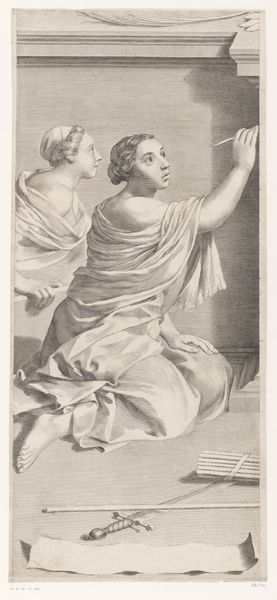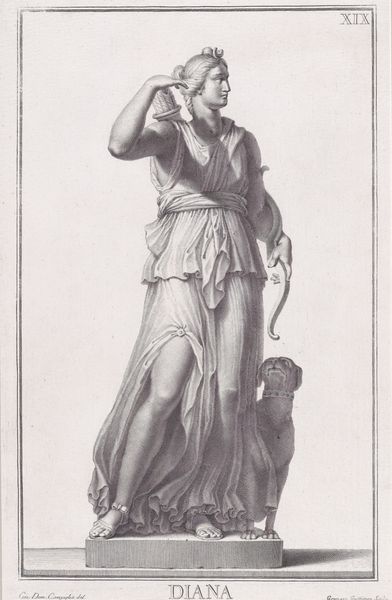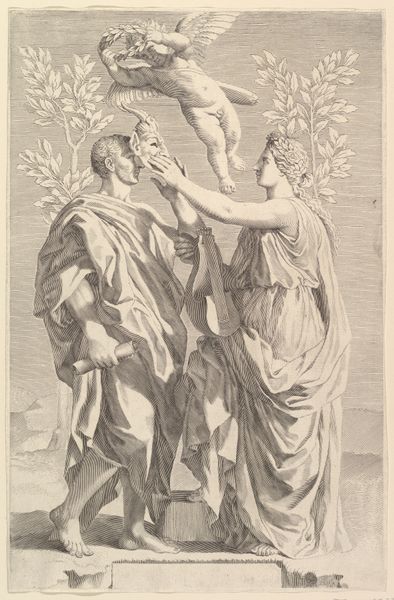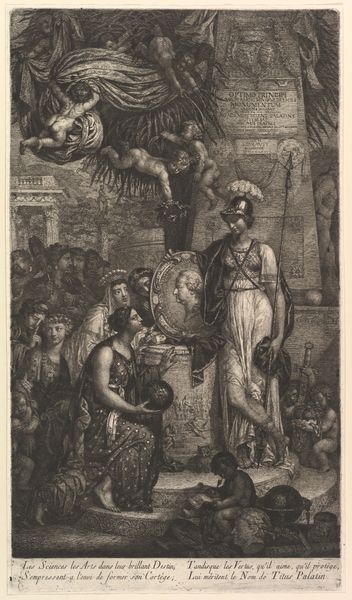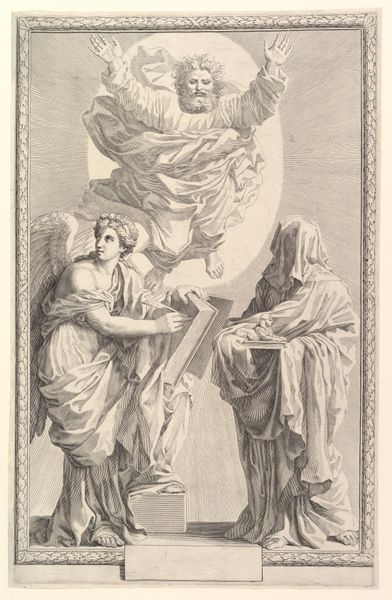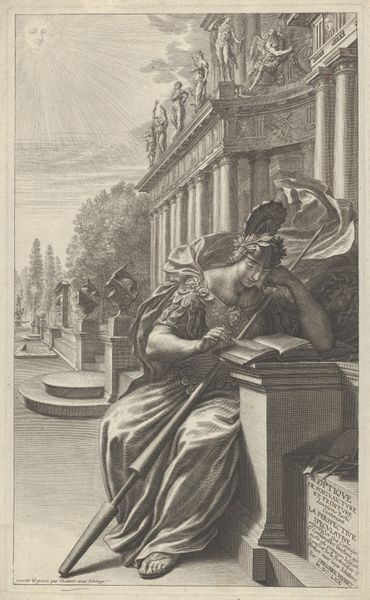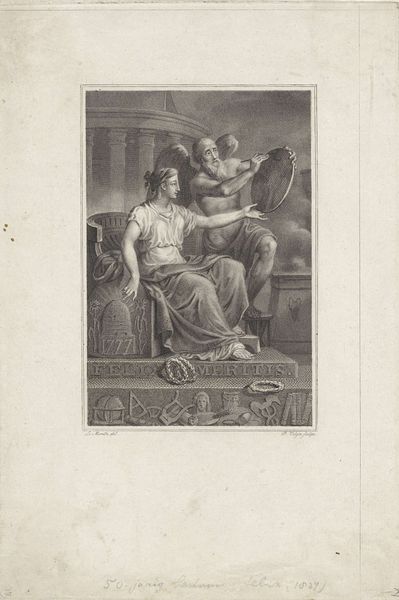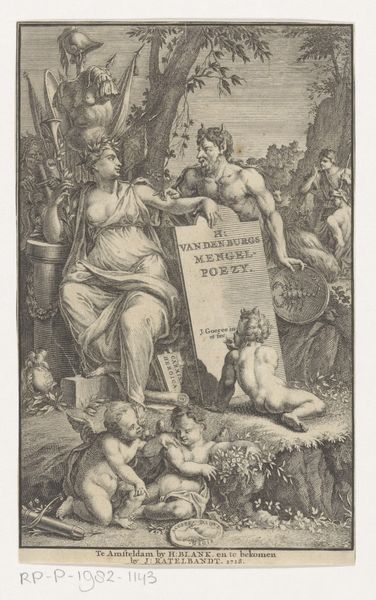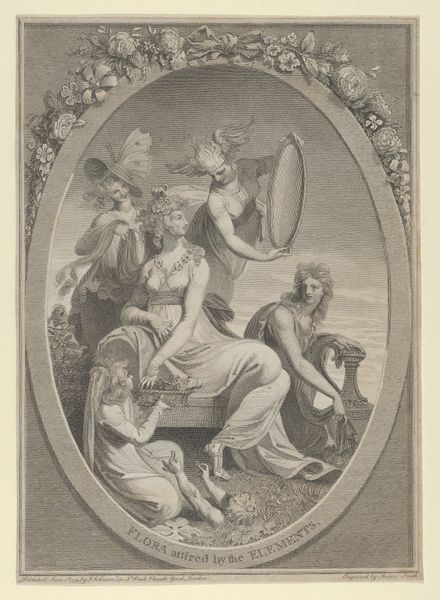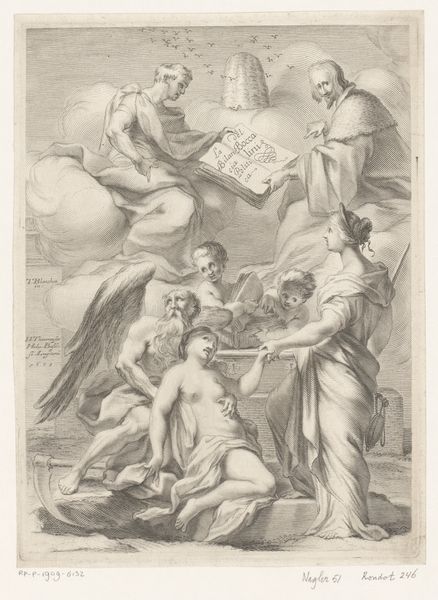
print, engraving
#
allegory
#
baroque
# print
#
old engraving style
#
traditional media
#
figuration
#
line
#
history-painting
#
engraving
Dimensions: height 174 mm, width 141 mm
Copyright: Rijks Museum: Open Domain
Editor: Here we have Claude Mellan's engraving, "Apollo met een amor," from 1638. I’m struck by the incredibly fine lines and how they create a sense of depth, even though it’s just black and white. What details stand out to you the most? Curator: Look closely at how Mellan has used a single, uninterrupted line to render the entirety of Apollo's face. It’s a bravura demonstration of technique, a direct challenge to established modes of engraving which relied on hatching. This wasn't just about depicting Apollo, but about showcasing the material possibilities and pushing the boundaries of the engraving process. The labor involved in creating such detail speaks to a deliberate blurring of the line between high art and the work of craft. Editor: That’s amazing, I didn’t realize it was a single line! What about the book or paper Apollo is holding—does that add another layer of meaning? Curator: Precisely. The inscription “Les Amours de Tristan” adds another layer. Consider this in the context of 17th-century printmaking, where prints like these were both artistic expressions and commodities, made and sold in workshops. Mellan may have made it for an edition of Tristan and Isolde, tying the mythological Apollo to romantic literature, demonstrating its commercial function beyond just its artistic value. Editor: So, it’s not just the image itself, but also how it was made and disseminated that’s important? Curator: Exactly! How materials were sourced, how workshops were organized, who the audience was—all these factors inform our understanding of the work far beyond traditional art historical concerns. What’s your takeaway from considering the image and its production? Editor: I think I now have a fuller understanding of the art. The focus on material creation enriches how we interpret an image, it is not separate, as I previously thought. Curator: Agreed! And considering art this way makes us ask essential questions about artistic intent and the realities of production.
Comments
No comments
Be the first to comment and join the conversation on the ultimate creative platform.
